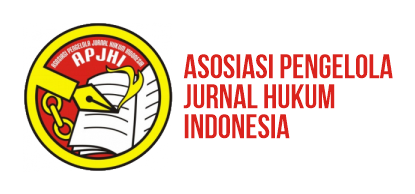Korelasi Pemilu Serentak dengan Multi Partai Sederhana Sebagai Penguatan Sistem Presidensial
DOI:
https://doi.org/10.31078/jk1134Keywords:
concurrent election, the electoral system, political party system, presidential systemAbstract
Constitutional Court Decision No. 14/PUU-XI/2013 mandated national elections simultaneously between elections executive (President and Vice-President) and legislative (House of Representatives, Provincial and District/City). After the 1945 amendment to experience a variety of complications in the Indonesian political system nationally. Democratization deliver the Indonesian people switching system of government, ie from a presidential system to the parliamentary system. Elections as a democratic process to the leadership of the government elected by the people as a sovereign State. The system of government by consensus of the people, by the people and for the people has implications for improving the effectiveness and stability of the country. The Problem is the electoral system with the current political party system is less effective in the election which is actually held separately between the presidential election, and the election pileg. Giving rise to various problems of the complexity of government (central and local governments). In the hierarchy, the presidential system is less relevant to the separate electoral system between national elections (pileg and presidential) election and the multi-party system. Political reality with the current system adopted, lead to conflicts among constituents, a very high political costs for the government and the candidates (candidates), strengthening of money politics is difficult to avoid the impact of a majority vote, a negative effect on the psychology of candidates when lost or won in battle politics, coalitions are not “healthy” in the implementation of the government, due to various political ideologies and individual interests, as well as the problems of the strategic policies of government. The correlation between electoral systems simultaneously with a multi-party system is a simplified alternative solution in presidential systems strengthening to improve the welfare of the whole people of Indonesia.
References
Asshiddiqie, Jimly, 2006, “Parpol dan Pemilu sebagai Instrumen Demokrasi”, Jurnal Konstitusi, Volume 3, Nomor 4, Desember, h. 6-27.
__________, 2006, Pengantar Hukum Tata Negara, Jilid II, Cetakan kesatu, Jakarta: Sekretariat Jenderal dan Kepaniteraan MK RI.
Shubhan, Hadi, 2006, “Recal: Antara Hak Partai Politik dan Hak Berpolitik Anggota Parpol”, Jurnal Konstitusi, Volume 3, Nomor 4 Desember, h. 30-57.
Surbakti, Ramlan, dan Supriyanto, Didik, dan Asy’ari, Hasyim, 2011, Menyederhanakan Waktu Penyelenggaraan Pemilu: Pemilu Nasional dan Pemilu Daerah, Seri Elektoral Demokrasi, Buku 2, Jakarta: Kemitraan bagi Pembaharuan Tata Pemerintahan.
__________, 2011, Merancang Sistem Politik Demokrasi Menuju Pemerintahan Presidensial yang Efektif, Seri Elektoral Demokrasi, Buku 1, Jakarta: Kemitraan bagi Pembaharuan Tata Pemerintahan.
__________, 2011, Membangun Sistem Kepartaian Pluralisme Moderat: Menyederhanakan Partai Politik, Seri Elektoral Demokrasi, Buku 3, Jakarta: Kemitraan bagi Pembaharuan Tata Pemerintahan.
Downloads
Published
How to Cite
Issue
Section
License
Authors who publish with this journal agree to the following terms:
- Copyright of the published articles will be transferred to the journal as the publisher of the manuscripts. Therefore, the author confirms that the copyright has been managed by the publisher.
- The publisher of Jurnal Konstitusi is The Registrar and Secretariat General of the Constitutional Court of the Republic of Indonesia.
- The copyright follows Creative Commons Attribution-NonCommercial-ShareAlike 4.0 International License: This license allows reusers to distribute, remix, adapt, and build upon the material in any medium or format for noncommercial purposes only, and only so long as attribution is given to the creator. If you remix, adapt, or build upon the material, you must license the modified material under identical terms.

















